I have a map with a scale like this one: (the numbers are just an example)
 which describes a single variable on a map. However, I don't have access to the original data and know pretty close to nothing
about image processing. What I have done is use PIL to get the pixel-coordinates and RGB values of each point on the map. Simply using
which describes a single variable on a map. However, I don't have access to the original data and know pretty close to nothing
about image processing. What I have done is use PIL to get the pixel-coordinates and RGB values of each point on the map. Simply using pix = im.load() and saving pix[x,y] for each x,y. Now I would like to guess the value of each point using the gradient above.
Is there a standard formula for such a gradient? Does it look very familiar to the trained eye? I have visited Digital Library of Mathematical Functions for some examples ... but I'm not sure if it's using the hue, the rgb height function or something else (to make things easier I'm also colorblind to some greens/brows/reds) :)
Any tips on how to proceed, libraries, links or ideas are appreciated. Thank you!
edit:
Following the replies and martineau's suggestion, I've tried to catch the colors at the top and bottom:
def rgb2hls(colotup):
'''converts 225 based RGB to 360 based HLS
`input`: (222,98,32) tuple'''
dec_rgb = [x/255.0 for x in colotup] # use decimal 0.0 - 1.0 notation for RGB
hsl_col = colorsys.rgb_to_hls(dec_rgb[0], dec_rgb[1], dec_rgb[2])
# PIL uses hsl(360,x%,y%) notation and throws errors on float, so I use int
return (int(hsl_col[0]*360), int(hsl_col[1]*100), int(hsl_col[2]*100))
def pil_hsl_string(hsltup):
'''returns a string PIL can us as HSL color
from a tuple (x,y,z) -> "hsl(x,y%,z%)"'''
return 'hsl(%s,%s%%,%s%%)' % (hsltup[0], hsltup[1], hsltup[2])
BottomRed = (222,98,32) # taken with gimp
TopBlue = (65, 24, 213)
hue_red = pil_hsl_string(rgb2hls(BottomRed))
hue_blue = pil_hsl_string(rgb2hls(TopBlue))
However they come out pretty different ... which makes me worry about using the rgb_to_hls function to extract the values. Or I'm I doing something very wrong? Here's what the color s convert to with the code:



